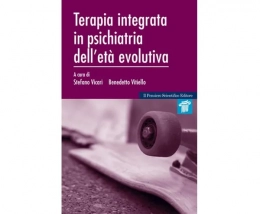Non ci sono recensioni
| Description | |
|
This book is the product of an important collaboration between clinicians of the manual therapies and scientists in several disciplines that grew out of the three recent International Fascia Research Congresses (Boston, Amsterdam, and Vancouver). The book editors, Thomas Findley MD PhD, Robert Schleip PhD, Peter Huijing PhD and Leon Chaitow DO, were major organizers of these congresses and used their extensive experience to select chapters and contributors for this book. This volume therefore brings together contributors from diverse backgrounds who share the desire to bridge the gap between theory and practice in our current knowledge of the fascia and goes beyond the 2007, 2009 and 2012 congresses to define the state-of-the-art, from both the clinical and scientific perspective. Prepared by over 100 specialists and researchers from throughout the world, Fascia: The Tensional Network of the Human Body will be ideal for all professionals who have an interest in fascia and human movement - physiotherapists, osteopathic physicians, osteopaths, chiropractors, structural integration practitioners, manual therapists, massage therapists, acupuncturists, yoga or Pilates instructors, exercise scientists and personal trainers - as well as physicians involved with musculoskeletal medicine, pain management and rehabilitation, and basic scientists working in the field. |
| Author Info | |
| Edited by Robert Schleip, PhD, MA , Director Fascia Research Project, Ulm University Germany; Research Director European Rolfing Association; Director Deutche Gesellschaft fur Myofascial Release; Registered Naturopath, Certified Rolfing & Feldenkrais Teacher; Thomas W. Findley, MD, PhD , Center for Healthcare Knowledge Management, VA New Jersey Healthcare System, New Jersey, USA; Professor, Department of Physical Medicine and Rehabilitation, UMDNJ-New Jersey Medical School, Newark NJ; Executive Director, Ida P Rolf Research Foundation, Boulder CO, USA; Leon Chaitow, ND, DO (UK), Registered Osteopath and Naturopath; Honorary Fellow and Former Senior Lecturer, School of Life Sciences, University of Westminster, London, UK; Fellow, British Naturopathic Association.; Fellow, College of Osteopaths, UK and Peter Huijing, PhD, Professor of Biomechanics and Physiology, Research Instituut MOVE, Faculteit Bewegingswetenschappen, Vrije Universiteit, Amsterdam, The Netherlands |
Table of Contents:
SECTION I SCIENTIFIC FOUNDATIONS
Part 1 Anatomy of the fascial body
1.1 General anatomy of muscular fasciae
1.2 Somatic fascia
1.3 Fascia superficialis
1.4 Deep fascia of the shoulder and arm
1.5 Deep fascia of the lower limbs
1.6 The thoracolumbar fascia: An integrated functional view of the anatomy of the TLF and coupled structures
1.7 The deeper fasciae of the neck and ventral torso
1.8 Visceral fascia
1.9 Membranous structures within the cranial bowl and intraspinal space
1.10 Diaphragmatic structures
Part 2 Fascia as an organ of communication
2.1 Fascia as an organ of communication
2.2 Proprioception
2.3 Interoception: A new correlate for intricate connections between fascial receptors, emotion and self recognition
2.4 Nociception: The thoracolumbar fascia as a sensory organ
2.5 Fascia as a body-wide communication system
Part 3 Fascial force transmission
3.1 Force transmission and muscle mechanics: General principles
3.2 Myofascial force transmission: An introduction
3.3 Myofascial chains: A review of different models
3.4 Anatomy trains and force transmission
3.5 Biotensegrity: The mechanics of fascia
3.6 The subcutaneous and epitendinous tissue behaviour of the multimicrovacuolar sliding system
Part 4 Physiology of fascial tissues
4.1 The Physiology of fascia: An introduction
4.2 Fascia is alive: How cells modulate the tonicity and architecture of fascial tissues
4.3 Extracellular matrix
4.4 The influence of pH and other metabolic factors on fascial properties
4.5 Fluid dynamics in fascial tissues
SECTION II CLINICAL APPLICATION
Part 5 Fascia-related disorders
5.1 Fascia-related disorders: An introduction
5.2 Dupuytren’s disease and other fibrocontractive disorders
5.3 ‘Frozen shoulder’
5.4 Spastic paresis
5.5 Diabetic foot
5.6 Scleroderma and related conditions
5.7 Trigger points (TrP) as a fascia-related disorder
5.8 Fascia-related disorders: hypermobility
5.9 Anatomy of the plantar fascia
Part 6 Diagnostic procedures for fascial elasticity
6.1 Diagnostic procedures for fascial elasticity : An introduction
6.2 Fascial palpation
6.3 Hypermobility and the hypermobility syndrome: assessment and management
Part 7 Fascia-oriented therapies
7.1 Inclusion criteria and overview
7.2 Trigger Point Therapy
7.3 Rolfing® Structural Integration
7.4 Myofascial induction approaches
7.5 Osteopathic manipulative therapies and fascia
7.6 Connective tissue manipulation
7.7 Fascial manipulation
7.8 Managing dysfunctional scar tissue
7.9 Acupuncture as a fascia-oriented therapy
7.10 Gua shua
7.11 Prolotherapy
7.12 Neural therapy
7.13 Dynamic fascial release: Manual and tool assisted vibrational therapies
7.14 Graston Technique®:A contemporary instrument assisted mobilization method for the evaluation & treatment of soft tissue lesions
7.15 The Fascial Distortion Model
7.16 Frequency specific microcurrent
7.17 Surgery and scarring
7.18 Temperature effects on fascia
7.19 Neurodynamics: Movement for neuropathic pain states
7.20 Stretching and fascia
7.21 Fascia in yoga therapeutics
7.22 Pilates and Fascia: The art of ‘Working In’
7.23 Nutrition model to reduce inflammation in musculoskeletal and joint diseases
7.24 Fascial fitness: Suggestions for a fascia oriented training approach in sports and movement therapies
SECTION III RESEARCH DIRECTIONS
Part 8 Fascia research: methodological challenges and new directions
8.1 Fascia, the clinic and fundamental scientific research: Considering the scientific process
8.2 Imaging: Ultrasound
8.3 MRI and Elastography
8.4 Roles of fascia in molecular biology of adaptation of muscle size
8.5 Mathematical modelling
Glossary




